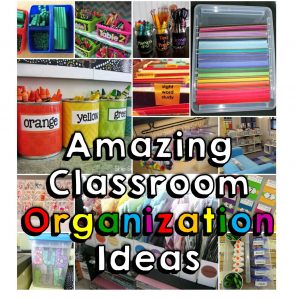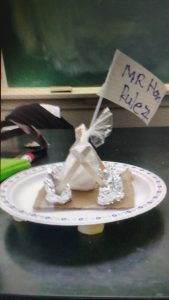.
- Organization
- A good teacher is an organized teacher! It seems very trivial because it is not one of those theories we learned in class, however, I found that organization was crucial in order to be a successful teacher. As a teacher, I was bombarded with so many things all at once. I am the type of person that is organized in his head but tend to forget small details. During the practicum, I had to figure out ways to keep everything together, and make sure I didn’t forget a small detail. I used several binders to keep my teaching materials. I had baskets to collect student’s homework, and then promptly marking them so I don’t forget. I also had reminders posted on my computer to remind me if I forgot something.

- Supportive classroom
- In order for students to learn, the students must want to be in your class. I believe one of the most fundamental needs to becoming a successful teacher is to create a classroom that the students want to attend. I laid out my expectations in the beginning and had students join me in creating a sensible list of expectations. I always had a happy and approachable demeanor. Since I like to laugh and smile a lot, I would occasionally joke with my students. Furthermore, I was always ready to make time for my students who were struggling and encouraged them to get after class help from me. I I made sure that none of my students, regardless of how well they did in class felt that they were judged. I treated all my students the same way regardless of classroom behaviour. To me, my favourite student is the one that needs me the most at a given instance. Ultimately I was able to build a formal, but relaxed classroom where the students viewed me as a mentor, rather than a dictator.
- Differential instructions/assessments
- During my first week teaching my students, I had them do an hands-on activity involved in protecting an egg. Interestingly, my SA pointed out that those who were the keenest on this project were usually the “trouble makers”. This showed a clear evidence of student’s different learning needs. Some students need structure and they fair better in class, where others need to explore and wander. So from the start, I tried to find different ways to help my students learn. Instead of just giving out notes, I had students teach each other in jigsaw groups. I also had students do as many labs as I can. Also, I would use demos, graphic illustrations during my teachings to reach out to different types of learners.

- Critical thinking/ Inquiry-based learning
- As I have mentioned in my teaching philosophy, I am really keen on having students think for themselves. In my practicum, I tried various ways to go about doing this. I came up with different activities that allow students to investigate different scientific concepts such as density, and have them discover its properties. Also, during my hooks, I tried to include some small controversies. One topic I brought up during a chemistry class was this fear of chemicals that is floating around in the media. I showed my class a huge chemical structure that looked very scary. Then I asked if the students would eat it, many said no. The chemical turned out to be table sugar. I had the students reflect how knowledge in science can help them make good choices in their everyday life
O-α-D-glucopyranosyl-(1→2)-β-D-fructofuranoside
- As I have mentioned in my teaching philosophy, I am really keen on having students think for themselves. In my practicum, I tried various ways to go about doing this. I came up with different activities that allow students to investigate different scientific concepts such as density, and have them discover its properties. Also, during my hooks, I tried to include some small controversies. One topic I brought up during a chemistry class was this fear of chemicals that is floating around in the media. I showed my class a huge chemical structure that looked very scary. Then I asked if the students would eat it, many said no. The chemical turned out to be table sugar. I had the students reflect how knowledge in science can help them make good choices in their everyday life
